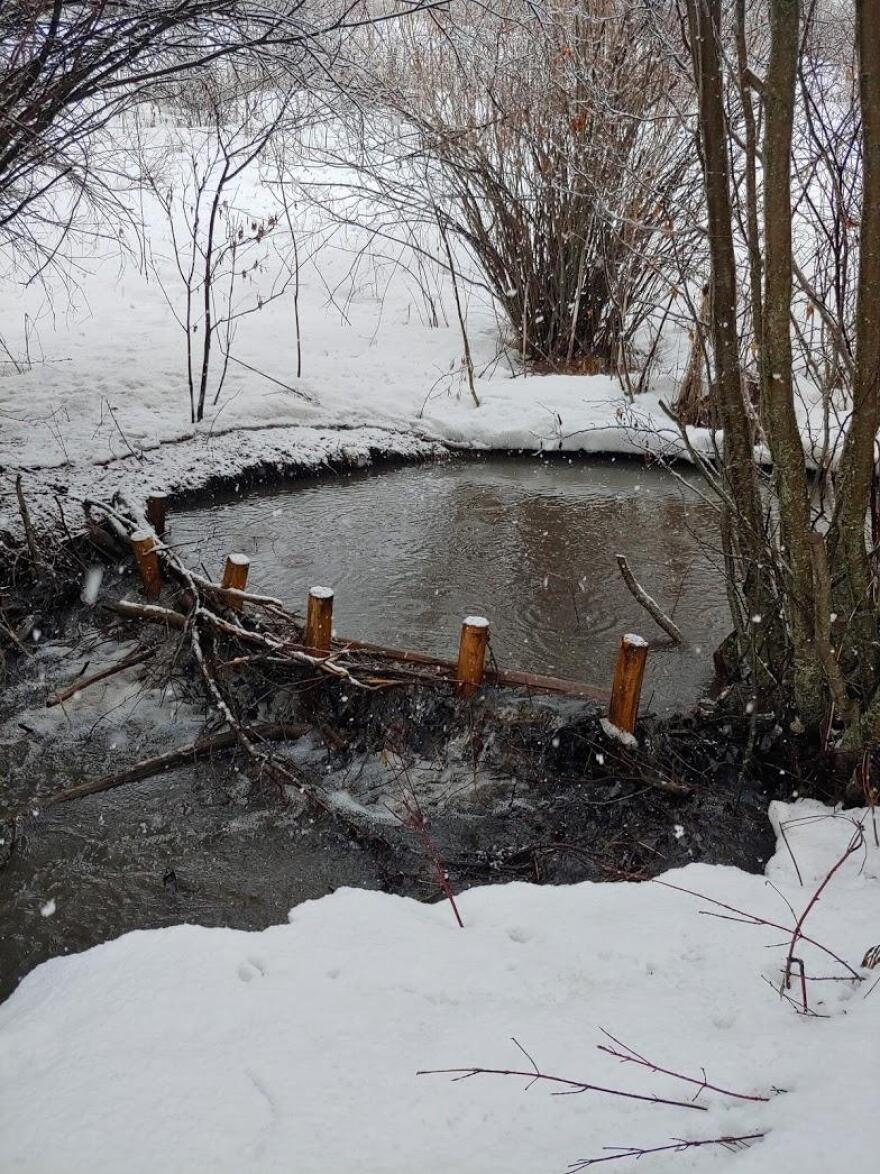Up in the mountains near Preston, Idaho and the Oneida Narrows of the Bear River, Professor Joe Wheaton of Utah State University and his students are working to restore a small stream called Station Creek.
“My name’s Joe Wheaton. I’m a professor in the Department of Watershed Sciences at Utah State University. These students out here are part of two classes. So, as part of our restoration consortium, we have a capstone class that our undergraduate majors have to take. The other course is a group of graduate students that are in a ‘partnering with beaver as a restoration tool course.’ So, the two of them are out here this weekend in the miserable rain designing their project. Then, next week, their gonna come out and they’re gonna build that stuff.”
Wheaton and his colleagues at USU’s Fluvial Habitats Center are part of a growing trend of researchers and resource managers that are looking to beavers as a tool in stream restoration.
“As engineers, we’ve got a couple thousand years of experience. They’ve got at least a couple hundred thousand years on us on that front. So they’re more experienced," he said. "There are a bunch of reasons we use beavers in restoration and most of it has to do with their manipulation of the environment – they’re ecosystem engineering.”
Throughout the 19thcentury, mountain men such as Jim Bridger, Jedidiah Smith and others trapped beavers extensively in the Rocky Mountains, supplying furs for hats that had become fashionable back East and in Europe. Little did these fur trappers know, they were greatly altering streams for at least the next 200 years. Beaver numbers now are a fraction of what they once were.
On Station Creek, Wheaton and his students can see the impacts of old beaver dams even though beavers haven’t been observed there for about 30 years.
“How would you describe to the floodplain?” asks Wheaton. “It’s stepped. What does that suggest?”
“Past beavers,” says a student.
“Yeah. It at least suggests it’s structurally forced flooding of the floodplain,” says Wheaton. “So that’s probably one big massive dam at the front of that sort of cattail area, all the way across. There’s probably another little dam right in here. Potentially another one right here – old relic dams.”
According to Wheaton, beaver dams have many positive impacts on streams.
“They’re modifying habitat for their own purposes. But in the process, it makes way better habitat for not just instream biota, not just this riparian vegetation that’s there, it also makes it a magnet for wildlife and upland species, waterfowl, and for birds that are just flying through an area,” he said.
So beavers increase the number of different habitats that native species rely on, but Wheaton says they can also benefit people in a more direct way.
“It also makes these much less efficient conveyors of water. We’ve spent the last couple hundred years managing the West to be a more efficient drain – so we could get it quicker," he said. "And, what we’ve inadvertently done is make ourselves way more vulnerable to things like fire, things like drought, to things like flood. When these systems are cluttered up, and when they have a lot of structure in them, they are less efficient conveyors of all mass, water, wood, sediment, whatever. And that inefficiency is what makes these more resilient riverscapes.”
Basically, if you were to compare stream drainage with lots of beavers to one without, you’d see that the one with beavers has more late-summer water flow which is becoming more critical as droughts impact the West. You’d also see that forest fires don’t burn as much area around streams because beaver dams promote the growth of fire-resistant vegetation.
Wheaton says: “If we can get them to take over doing the work of restoration, they expand their footprint and they can do a lot of good. They can also be an absolute pain in the neck. So, they can clog up irrigation ditches. They can clog up culverts. They can cause flooding in areas where there’s infrastructure. And so, we have to be realistic about that and recognize that there are places where we need to mitigate those sort of actions. But in a lot of cases, nuisance beavers from those areas can be live-trapped and translocated into some of the areas where they’ve been extirpated from where they can do some of this good that we're after.”
Wheaton and his students are now working to create a complex of artificial beaver dams so that nuisance beavers captured from elsewhere can be released into Station Creek and find themselves at home. The hope is beavers will then start building their own dams and start creating new habitats and increasing the resiliency of the stream and surrounding areas to drought and fire.


